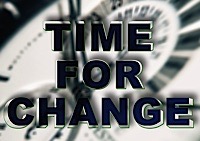
2011 was full of good news for social entrepreneurs. And 2012 promises to be even more exciting. Here is what I think social innovators will build upon in the New Year!
Co-operatives Are Making it Easy All the Way
One of the positive things that 2011 stood for was collaboration. Co-operatives, sharing models cropped up in all business areas whether it was cars or workspace, people found that working together made all the difference. It was fun, profitable and lowered costs and environmental impact. Successful collaborative design and crowd funding projects have laid the foundation for cool ventures that think outside the box. Several successful social enterprises were founded on this ideology and everything points to the direction that the sharing model will bring in a new wave of business possibilities in 2012.

 innovationDAILY had a significant increase in readership in 2011 and I would like to share the stats with you comparing them to 2010:
innovationDAILY had a significant increase in readership in 2011 and I would like to share the stats with you comparing them to 2010:



















